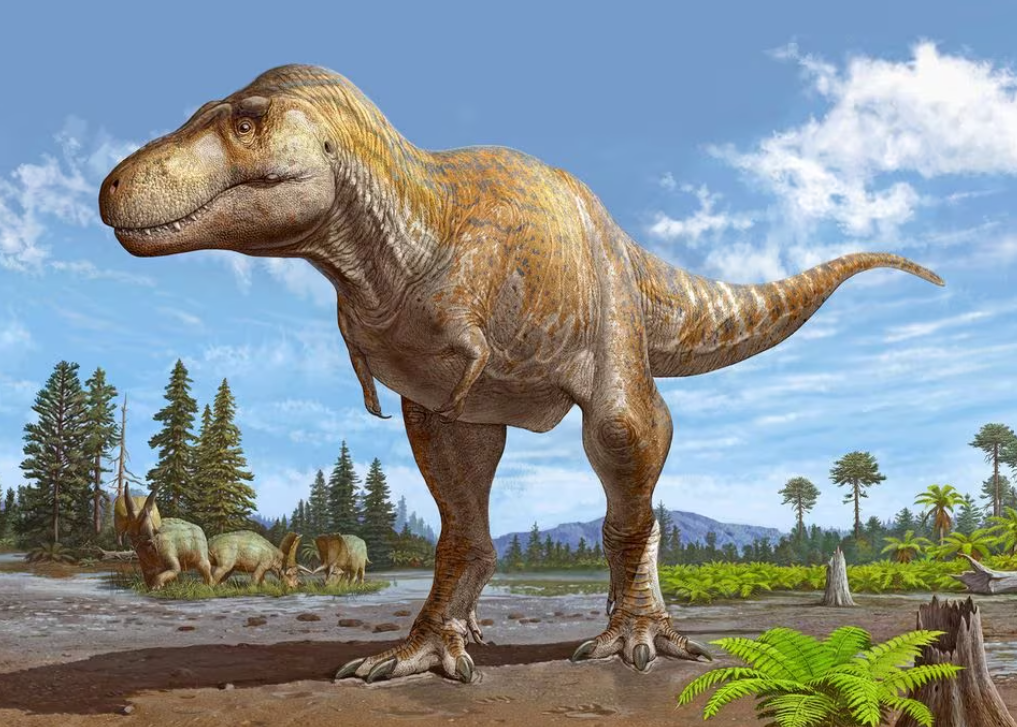
©U.S. Sergei Krasinski/Handout via Reuters
Pre-reading questions:
I will read each question. Then, please answer them.
講師がそれぞれの質問を読むので答えましょう。
- Do you think dinosaurs lived a long time ago?
- Have you ever heard about Tyrannosaurus rex before?
Vocabulary:
I will read the words, meanings, and sample sentences. Then, repeat after me.
単語、意味、例文を読みます。講師に続いて音読しましょう。
- discussion /dih-SKUHSH-uhn/
- argument /AHR-gyuh-muhnt/
- suggest /suhg-JEST/
- giant /JAHY-uhnt/
- appear /uh-PEER/
[noun] – the activity in which people talk about something and tell each other their ideas or opinions
We had a lively discussion about our favorite books in the book club.
[noun] – a disagreement, or the process of disagreeing
There was an argument between the students about the best way to solve the math problem.
[verb] – to mention an idea, possible plan, or action for other people to consider
She didn’t say it explicitly, but her smile suggested that she was happy with the news.
[adjective] – extremely large
The elephant is a giant creature, towering over most other animals in the jungle.
[verb] – to start to be seen or to be present
The sun will appear in the morning, bringing warmth to the chilly day.
Article reading:
Please read the whole article. Then, I will check your pronunciation and intonation.
記事を音読しましょう。講師はあなたの発音とイントネーションを確認します。
In 1983, in southeastern New Mexico, near Kettle Top Butte, scientists found a partial skull. This skull belonged to a different kind of Tyrannosaurus called Tyrannosaurus mcraeensis. It is older than the famous T. rex, having a similar size but some differences, like a shallower and more curved lower jaw and lower hornlets above the eyes. Although only 25% of the skull is found, crucial parts like the braincase and upper jaws are still missing. This discovery challenges what we knew about Tyrannosaurus evolution and affects discussions about how they ate and chose mates. Despite arguments, it suggests that giant Tyrannosaurus species appeared much earlier, changing what we thought about their history in southern North America. Paleontologist Nick Longrich from the University of Bath points out the consistent differences in T. mcraeensis bones compared to T. rex bones, but some scientists think these differences are because of age and individual differences, making the discussion more complex. Additionally, there are disagreements about the fossil’s age, with some questioning the proposed 71–73 million-year timeline. This finding challenges our ideas, helping us understand more about dinosaur evolution in the prehistoric era.
True or False:
Read the sentences and identify if they are true or false based on the article.
文章を読んで、記事に基づいて正誤を答えましょう。
- In 1983, scientists found a complete Tyrannosaurus skull near Kettle Top Butte in southeastern New Mexico.
- Tyrannosaurus mcraeensis is younger than the well-known Tyrannosaurus rex.
- The discovered T. mcraeensis skull shares identical features with the T. rex, including the jaw and hornlets.
- Despite finding 25% of the skull, scientists have located crucial parts like the braincase and upper jaws.
- Paleontologist Nick Longrich argues that the differences between T. mcraeensis and T. rex bones are solely due to age and individual variations.
Fill in the blanks:
Choose the correct word from the table then fill in the blanks.
適切な言葉を選んで空欄を埋めましょう。
| discussion | argument | suggest | giant | appear |
- As the sun begins to set, stars start to ____________ in the night sky, creating a beautiful celestial display.
- In our ____________ about climate change, we explored various viewpoints on how to address environmental concerns.
- The storm brought a ____________ wave that crashed against the shore, leaving behind a trail of destruction.
- The teacher will often ____________ books for the students to read, providing ideas for their next literature assignment.
- The heated ____________ during the meeting revolved around the proposed changes to the company’s work schedule.